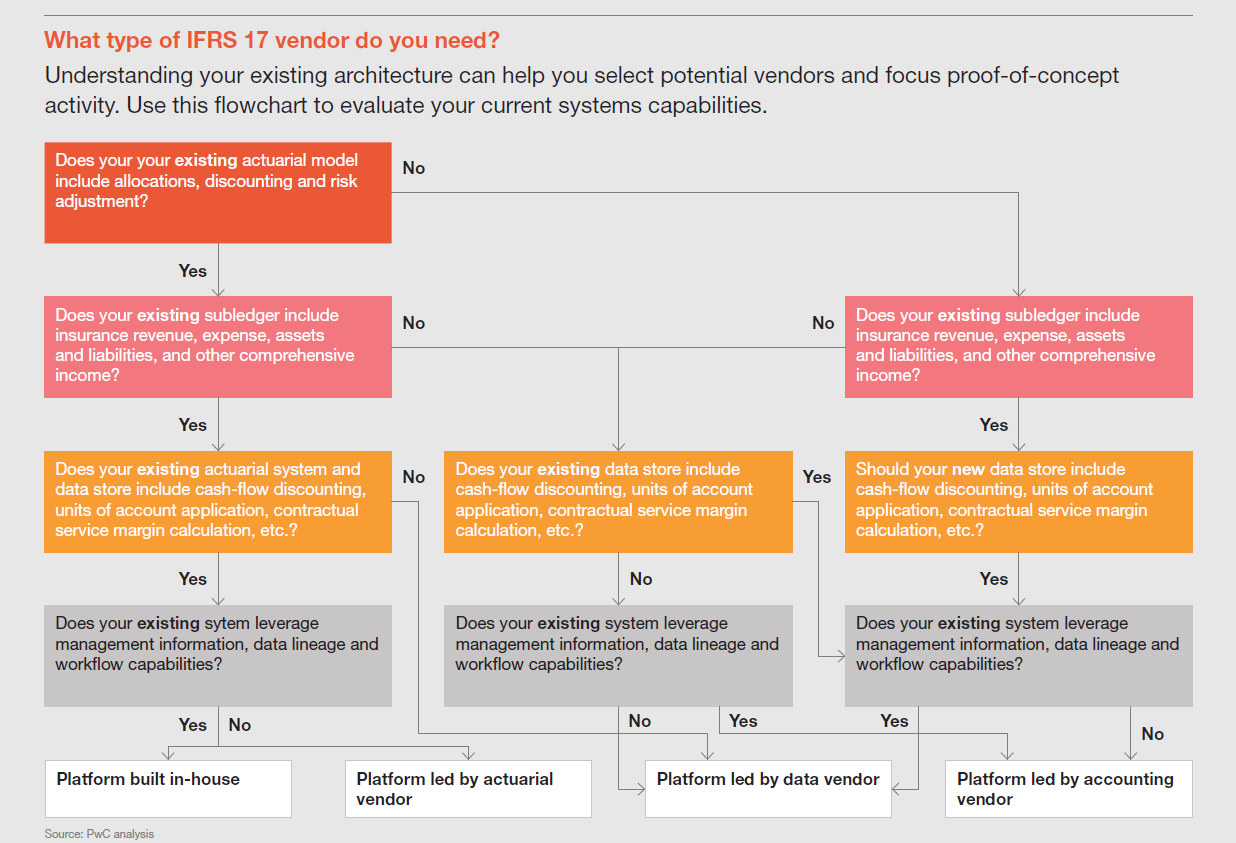
Overview
Complying with the International Financial Reporting Standard issued in May 2017 (IFRS 17) is requiring an expensive and complicated transition for most insurance
companies. In fact, you’ve probably been scrambling to prepare and were relieved when implementation was extended by a year, to January 1, 2022.
But you can’t afford to press the pause button. Now is the time to accelerate. There’s still a lot of work to do, starting with picking vendors to provide you with new software — and perhaps, while they’re at it, transform your systems. The good news is that vendors are more ready now than they were six months ago. If you make sure you understand what IFRS 17 requires of your systems and find the vendor with the capabilities you need, you’ll stay on track for a successful changeover.

To deliver on these requirements, you first need to determine whether you can reuse your existing system capabilities to achieve IFRS 17 compliance. Two insurers with seemingly identical books of business but distinct systems could come to very different vendor decisions. Understanding your existing architecture upfront can help you whittle your list of potential vendors.

Five critical vendor capabilities
Next, you need to make sure that the vendor’s solution has the following five key capabilities. Without all of them, a vendor won’t be able to keep you fully compliant with IFRS 17.
- Master data management and aggregation
- Orchestration
- Calculation engine
- Rules engine
- Reporting
Master data management and aggregation
This capability is necessary for data preparation, data validation, posting and reporting. Besides needing a predefined IFRS 17 data model and flexible approach to data storage, a vendor’s solution needs robust data feeds, a set of predefined rules to aggregate and post data/results, and the ability to both integrate with general ledgers and actuarial models to load and post data and to create an audit trail to track results.
No time to stand still
Given the huge changes associated with IFRS 17, we estimate that there are fewer than ten vendor solutions in the marketplace today that have the necessary capabilities to offer a comprehensive solution. Even among this fairly small universe, you’ll need to scrutinise the various offers to ensure you choose the one most appropriate for your needs and current IT environment. PwC’s advice is to try before you buy. Pick two to three vendors, work with them on proofs of concept over the next two to three months, and then decide which one is best for you.
What next? Refer to the contacts page and PwC's insurance servicesOpens in a new window for more information on how PwC can help you with IFRS 17.

Contact us
Diego Cervantes-Knox
IFRS 17 Insurance, Financial Services, Director, PwC United Kingdom
Tel: +44 7704 074 383


















